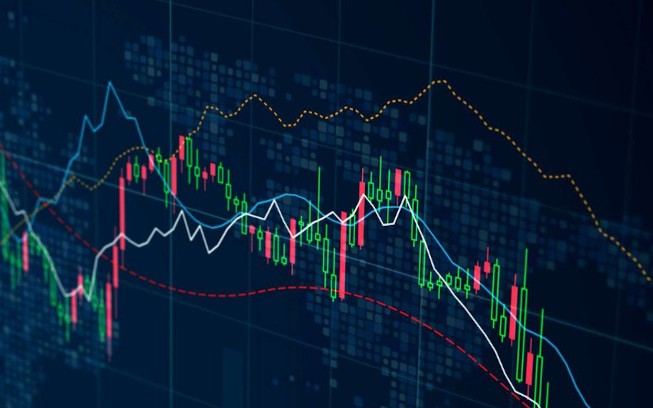No products in the cart.
Understanding Forex Trading Systems Strategies for Success 1926103204

In the world of finance, Forex trading represents one of the largest and most liquid markets globally. Forex trading systems play a crucial role in helping both novice and seasoned traders navigate this complex landscape. Whether you are looking to develop your trading strategy or understand the mechanisms behind Forex trading, exploring diverse trading systems can be invaluable. For in-depth analysis and resources, visit forex trading systems fxtrading-broker.com.
What is a Forex Trading System?
A Forex trading system is a set of rules or strategies that traders utilize to execute trades in the Forex market. These systems can be based on various factors, including technical analysis, fundamental analysis, or a combination of both. The primary goal of any trading system is to create a consistent method for entering and exiting trades, thereby maximizing profits while minimizing risks.
Types of Forex Trading Systems
Forex trading systems can be broadly categorized into several types, each with its unique approach and methodology. Understanding these types is essential for traders looking to find a system that suits their style.
1. Technical Analysis Systems
These systems rely on historical price data and various indicators to forecast future price movements. Traders use charts and technical indicators like Moving Averages, Relative Strength Index (RSI), and Bollinger Bands to identify potential trading opportunities. A significant advantage of technical analysis systems is that they can provide clear entry and exit signals based on quantifiable data.
2. Fundamental Analysis Systems
Unlike technical analysis, fundamental analysis focuses on economic indicators, news events, and geopolitical situations that can impact currency prices. Traders who use fundamental analysis systems often pay close attention to economic reports, central bank announcements, and other macroeconomic factors. While this approach can be more subjective and less predictable than technical analysis, it can offer deep insights into market movements driven by larger forces.
3. Automated Trading Systems
Automated trading systems, also known as algorithmic trading, utilize computer programs to execute trades based on predefined criteria. These systems can analyze market data at lightning speed, identifying and executing trades without human intervention. While automated trading can help eliminate emotional decision-making, it does require technical knowledge to develop and optimize algorithms.
4. Scalping Systems
Scalping systems focus on making small profits from frequent trades executed throughout the day. Traders who adopt this approach aim to capitalize on short-term price movements by opening and closing positions quickly, often within minutes. Scalping requires extreme discipline and a well-developed strategy to manage transaction costs and effectively monitor market changes.
5. Swing Trading Systems
Swing trading systems involve holding positions for several days or weeks, aiming to capture price swings in the market. This approach strikes a balance between comprehensive market analysis and active trading, allowing traders to benefit from both short-term and long-term market trends. Swing traders often leverage technical analysis to identify entry and exit points while considering fundamental factors that could impact prices over time.
Developing an Effective Forex Trading System
Creating a successful Forex trading system requires careful planning and a structured approach. Here are some steps to guide you in developing your unique trading system.
1. Define Your Goals
Before diving into the mechanics of trading, outline clear goals that align with your risk tolerance and financial objectives. Understanding what you want to achieve will shape your trading strategy and influence the type of system you develop.

2. Choose Your Trading Style
Your trading style will dictate the specific elements of your system. Consider whether you wish to engage in day trading, scalping, or swing trading, as these choices will influence your strategy and the included indicators.
3. Test Your System
Before committing real funds, rigorously backtest your trading system against historical data to assess its viability. Simulated trading allows you to see how your system would have performed in different market conditions, helping you identify potential weaknesses.
4. Monitor and Adjust
The Forex market is dynamic and constantly changing. As a trader, it’s important to be flexible and willing to adjust your trading system based on new information and market conditions. Keep track of your results, and regularly evaluate the effectiveness of your system.
5. Education and Continuous Learning
The realm of Forex trading is vast, and continuous education is vital for long-term success. Constantly seek new information, strategies, and market insights through books, courses, webinars, and forums.
Common Mistakes to Avoid
Even seasoned traders can fall into common pitfalls when developing or executing a Forex trading system. Staying vigilant can help avoid these mistakes:
1. Over-Leveraging
While leverage can amplify profits, it also increases risks. Traders should understand the implications of using high leverage and develop risk management strategies to safeguard their capital.
2. Lack of a Trading Plan
A well-defined trading plan is crucial. Traders who operate without a clear plan often make impulsive decisions driven by emotions rather than sound analysis.
3. Ignoring Market Conditions
External factors, such as economic reports and geopolitical events, can significantly influence market behavior. Failing to consider these elements may lead to unexpected losses.
4. Neglecting Risk Management
Risk management is a cornerstone of successful trading. Traders should always operate with a plan to manage risk, including setting stop-loss orders and only risking a small percentage of their capital on individual trades.
Conclusion
Forex trading systems are indispensable tools for traders aiming to achieve success in the complex and dynamic foreign exchange market. By exploring different types of systems, understanding their strengths and weaknesses, and continually educating themselves, traders can create a robust trading strategy that aligns with their goals. Whether through technical analysis, fundamental factors, or automated approaches, the right Forex trading system can pave the way for consistent profits and a sustainable trading career. As the landscape of Forex trading continues to evolve, embracing innovation and adaptability will remain key components in mastering the art of trading.

